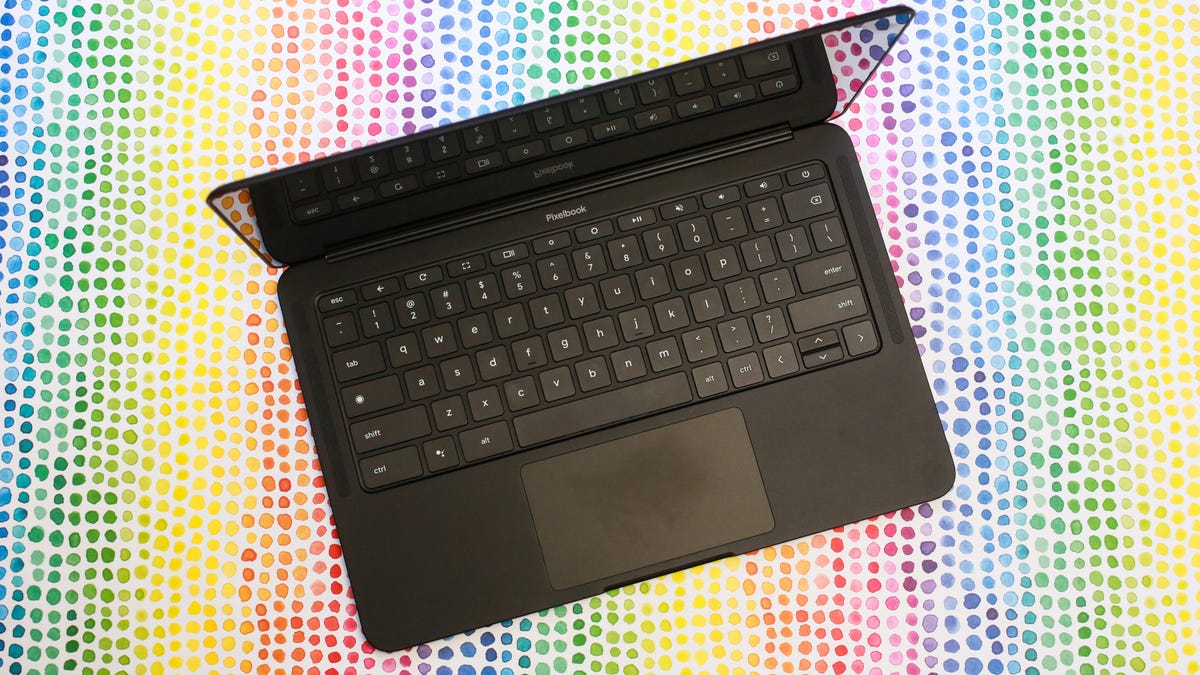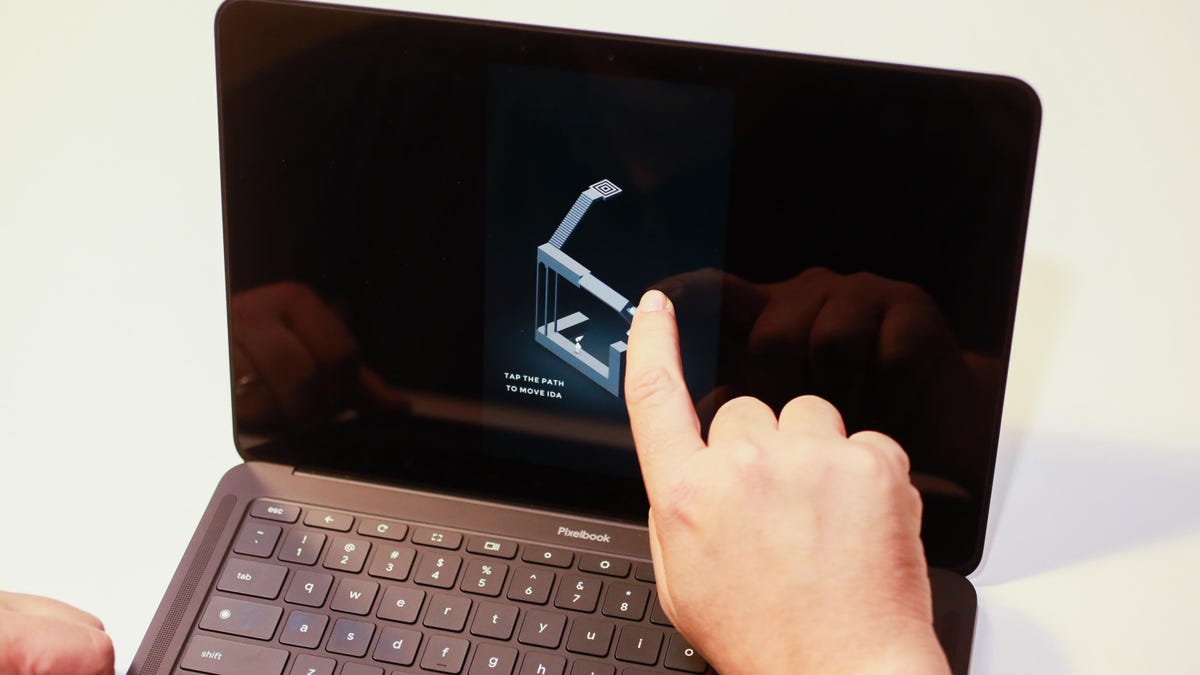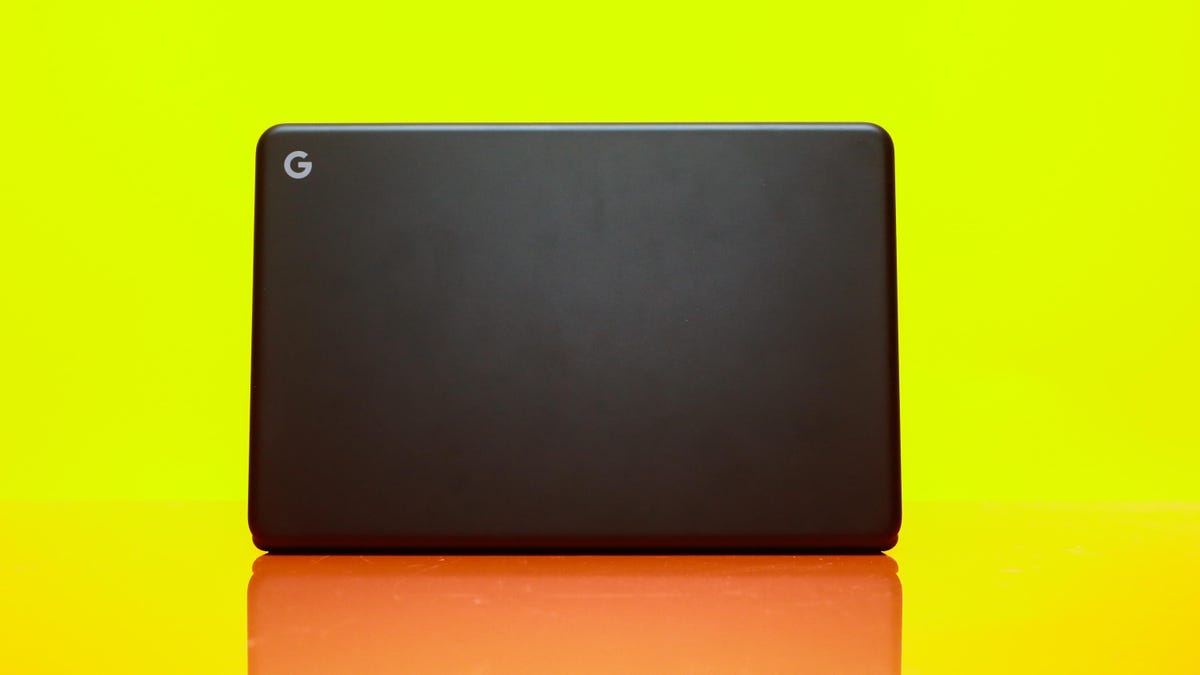Is a Chromebook a laptop? Is it a budget machine? Is it something you’d just use online? Is it something you’d make your main computer? I can’t entirely answer all these questions, because I haven’t come to terms with them either. I’ve used Chromebooks for years. My kid lives on them at school. I had to work on a Chromebook, the original Google Pixelbook, when my MacBook Air ($600 at Amazon) broke down at Google I/O. Generally, it was fine. I couldn’t easily use all the apps I’m used to, but I really loved how easily it connected to Chrome and Google tools, and how well-made the actual laptop was. It was also outrageously expensive for a Chromebook, at $999 and up.
After a year where Google experimented with Chrome tablets in last year’s Pixel Slate, the Pixelbook Go is a return to Chrome as Laptop. The Go is not a surprise: it’s a nicely made, really comfortable 13-inch laptop. Its keyboard is excellent. Its trackpad is OK. The display is fine. It has USB-C (two ports, in fact). It has extremely long battery life.
Google’s Pixelbook Go is a laptop with a grippy bottom






What the Pixelbook Go isn’t is The Future. It’s just a well-made device of the present, at a price that’ll be way too high for most Chromebook shoppers to consider. The Go starts at $649 (£629) with an Intel Core m3, but my Core i5 review unit with 8GB of RAM and 128GB of storage is $849 (all the Pixelbook Go configs come with eighth-gen Intel Core processors). That’s no bargain. And while there’s a 4K display option if you pay enough ($1,399 for the Core i7-equipped version with 16GB of RAM and 256GB of storage), there’s no Go with an LTE option.
I’ve been working on the Go for over a week, writing this review on it, using it with a USB-C monitor and dongles like my MacBook Air. It holds its own, at times. But I wouldn’t make a move to choose it as my Main Computer. Yes, Chromebooks have won me over at home. But I’d choose a more affordable one, or one that can also be a tablet. Those exist. The HP Chromebook X2 is available for less, and feels more versatile. $400-$500 seems like the furthest I’d go to pay for a Chromebook.
While the Pixelbook Go does feel premium, it doesn’t feel premium enough, or future-forward enough, for its price.


Now playing:
Watch this:
Meet Google’s less expensive Pixelbook Go
1:42
Where it shines
The battery life on the Pixelbook Go is indeed impressive. It topped our streaming battery test for laptops, at 15 hours, 47 minutes. This may be the best battery life on a laptop we’ve ever seen.
Yes, it’ll be more than enough for one day. It’s luxurious. Is it necessary? Maybe not. Many laptops have good enough battery life already. I use my phone constantly, but I don’t spend all my waking hours on a Chromebook. I like that the Pixelbook Go can quick-charge, which gives it a solid chunk of battery life in a few minutes (2 hours on 20 minutes of charge, more or less).


Sarah Tew/CNET
Google promised a better keyboard on the Go, and while I liked the Pixelbook’s keyboard in 2017, the new 2019 backlit “hush” keys are smooth and quiet and have great travel. Why can’t the MacBook have keys like this? It makes me sad. I love the way it feels to type on this laptop, though.
I also love the design of the case. The magnesium body and its curved matte black body reminded me of the old black MacBook from long ago, with updated tech. There’s also a pinkish model, too (“not pink”). It’s lighter than it looks (2.4 pounds, 1 kg), although it’s not as thin (0.5 inch, 13.4mm) as I expected. The wavy-grippy bottom and rubber feet are welcome touches, and just give it a more comfortable feel when carrying it.


Grippy bottom!
Sarah Tew/CNET
What I don’t love
I feel less thrilled by the trackpad. The larger surface area matches my expectations on a modern laptop, but the responsiveness didn’t. The clickpad was OK in most everyday cases, but with a monitor attached, responsiveness turned into lag. Highlighting text resulted in moments where the cursor seemed to drift. I prefer the feel and response of the MacBook Air’s trackpad, still my gold standard.
The 1,920×1,080-pixel resolution 13.3-inch display, to my eyes, seemed too harsh when looking at text. I was expecting warmer colors, or a crisper resolution. I felt too much glare. A warmer-color-temperature Night Light mode in Chrome OS turns everything way too yellow. I wanted a happy medium.
The display’s bezels are also oddly big, to the point where a thick black bar above and below the display made me wonder if this Chromebook could have had a less wide footprint by reducing those bezels.


A fair amount of bezel.
Sarah Tew/CNET
While the Pixelbook has a touchscreen, I had moments where its responsiveness varied. Scrolling could lag a bit, and sometimes it seemed like touch controls for pop-up settings wouldn’t work. I didn’t use touch much on this Chromebook, though, because it’s not a tablet convertible. The lid will only bend back far enough to use it as a laptop. The Pixelbook Go doesn’t support the Pixelbook/Pixel Slate stylus, either. While the Pixel Slate was far from perfect, I’m sad about the step backward.
Even though Google has a Titan C security chip on the Pixelbook Go for storing passwords, there’s no clever face unlock like the Pixel 4 has… and no onboard fingerprint reader, for that matter. The Pixel Slate allowed me to instantly log in with a fingerprint reader. You can use Android phones to unlock Chromebooks, Pixelbook Go included, but it’s not quite the same.
I had a few weird moments where USB-C dongles in one of the two USB-C ports wouldn’t connect to all the things I had snaked from it; Ethernet seemed to drop in and out. I couldn’t tell if this was my office network, or the Chromebook’s USB-C ports. I’ll check on this more. Also odd: My office’s corporate Wi-Fi network wouldn’t work on the Pixelbook Go, and after checking with office IT and Google, I still can’t figure out why.


Oh, just playing Monument Valley on a Chromebook.
Sarah Tew/CNET
Android apps run, and Linux too, and Google Assistant (and eventually Stadia)
There are some fringe benefits to living on a Chromebook: Google Play apps download and run, although some games ended up feeling glitchy, and Slack didn’t log in via my office’s Okta account (I had to use the website in Chrome instead). There’s Linux as well, via a beta on Chrome OS. That’s interesting in theory, but for me, it’s of little practical interest.
Google’s upcoming streaming game service, Stadia, works on Chromebooks, including the Pixelbook Go. I’ll swing back and give impressions on gaming with Stadia on the Pixelbook Go when Stadia is released in November.
Google Assistant is available at a button press, just like last year’s Pixel Slate. This is helpful, and something I expect from a Google product.


Sarah Tew/CNET
Chromebooks are great. But you don’t need the Pixelbook Go
I want to make it clear that I think Chromebooks are extremely useful, but they’re best as budget devices. The Pixelbook Go’s price is just too high for what it is. And it’s not that small, either: This isn’t an ultraportable. It’s just a weird tweener laptop running Chrome.
At $400, I’d say this was a solid pick. Maybe it’ll be on sale someday. The Pixelbook Go feels like a lateral move at best for Google’s Chromebook vision. Maybe next year?




